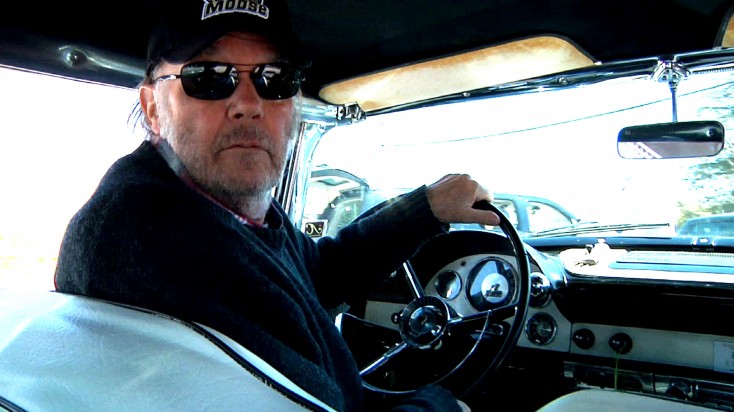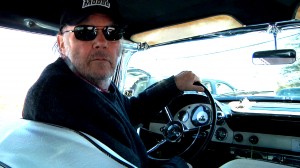By JAMES DAWSON
Front Row Features Film Critic
Some of the hometown landmarks Neil Young recalls during on-the-road segments of this concert documentary may be long gone, but the singer-songwriter himself remains enduringly iconic after nearly a half-century of rocking in the free world.
“Neil Young Journeys” is the third collaboration between Young and director Jonathan Demme, following 2006’s “Neil Young: Heart of Gold” and 2009’s “Neil Young Trunk Show.” Most of this film was shot at a solo concert where Young performed more than a dozen songs dating from the 1960s to his 2010 “Le Noise” album, along with the previously unreleased “Leia” and “You Never Call.”
Young also is shown behind the wheel of a 1956 Crown Victoria driving from Omemee, Ontario to Toronto’s Massey Hall, site of the last two shows of his 2011 world tour. At one point, he name-checks a childhood friend who convinced him that road tar would taste like chocolate after enough chewing.
Like “Neil Young: Heart of Gold,” “Neil Young Journeys” refreshingly includes almost no audience reaction shots, but director Demme occasionally takes the up-close and personal touch too far. A mike-stand camera is focused ridiculously near Young’s beard-stubbled neck for some aggravatingly extended shots. During “Hitchhiker,” one of six songs from “Le Noise,” a fleck of the singer’s saliva hits the camera’s lens. The rest of that song plays through the blurred blotch it left behind, which may be a little too cinéma-vérité for some viewers’ sensibilities.
Demme makes up for that lapse with things like a moving montage of news footage from the 1970 Kent State shootings that runs during Young’s monumental rendition of “Ohio.” Including the names and faces of the four students killed during that bygone anti-war protest avoids seeming tacky thanks to the obvious sincerity of Young’s still undiminished “what if you knew her and found her dead on the ground” outrage.
Young accompanies himself mostly on electric and acoustic guitars, plus occasional piano, organ and harmonica, with enough widescreen, room-filling sound that it’s hard to believe he’s on stage alone. The audio is impeccable, making it a shame there isn’t a soundtrack CD.
DVD bonus features include two Young and Demme interview segments offering more than an hour of reminiscences about their history together, behind-the-scenes details and even some artistic advice. (“Be sure to welcome failure,” Young notes, “because then you have no fear.”) There’s also a short making-of segment and the movie’s trailer.
Unfortunately, the DVD’s scene-select menu is not indexed by song, making it impossible to jump directly to individual tracks. The name of every song Young plays briefly appears onscreen, however, so each can be located with some attentive fast-forwarding. Another minor quibble is that the DVD’s optional subtitles vanish during songs instead of providing lyrics.
Grizzled and utterly un-flashy in a battered hat and rumpled sport coat, Young is one of the few 1960s survivors who still sounds as vital, engaged and interesting today as he did nearly five decades ago. His playing is dazzling, his songs are timeless, and “Neil Young Journeys” is a trip worth taking.






